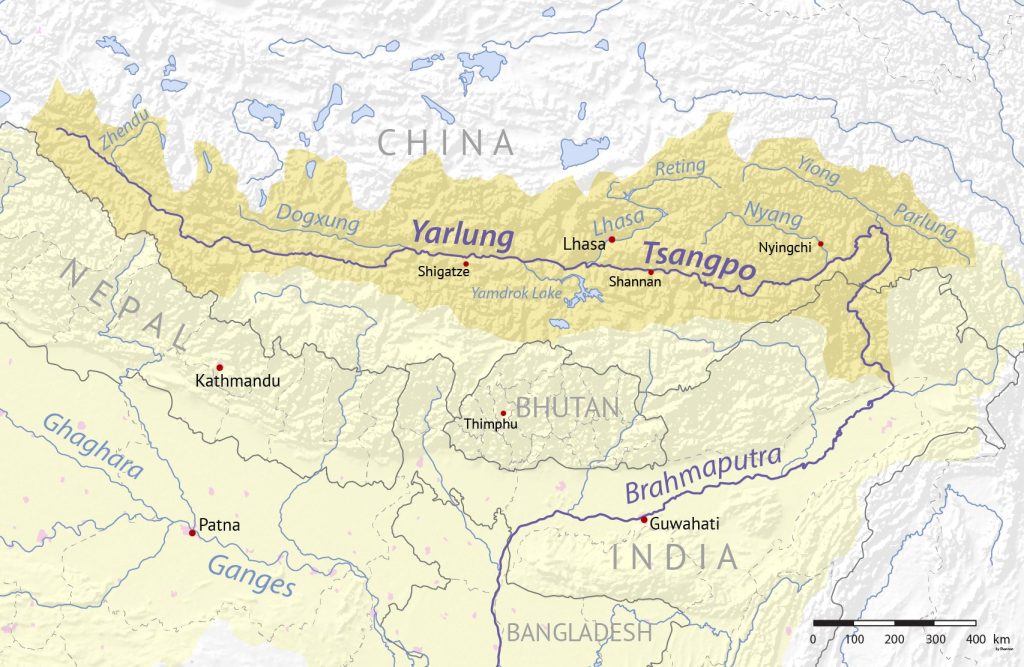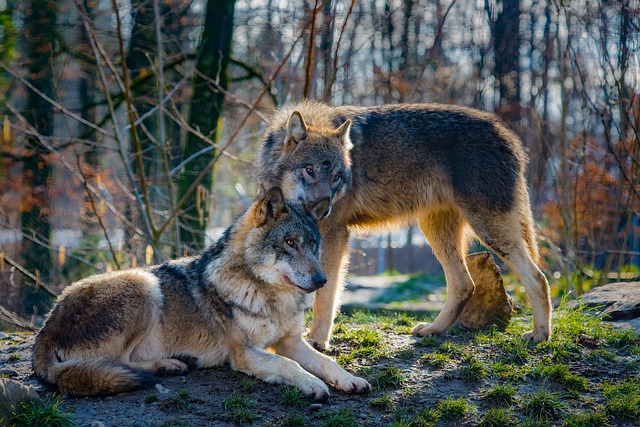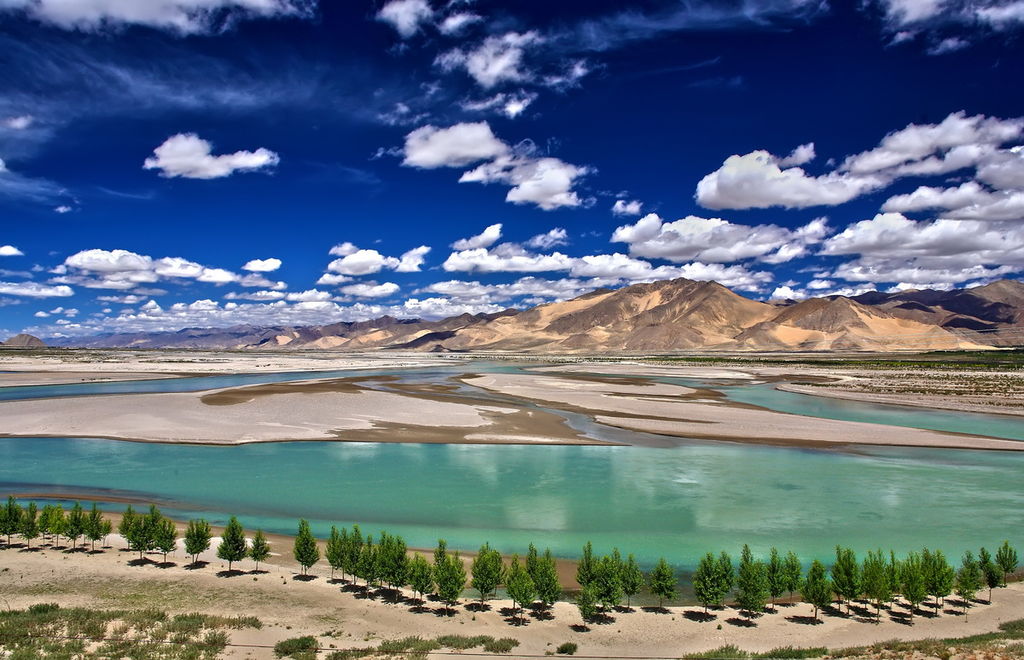By Adam Federman
On August 27, 2009, Dan Cincotta, a fisheries biologist with West Virginia’s Department of Natural Resources, was conducting a routine inventory of Dunkard Creek, a small river that runs through West Virginia and southwestern Pennsylvania. He was accompanied by a consultant and an environmental engineer from the state’s largest coal and gas company, Consol Energy, which operates a coalmine, Blacksville #2, just outside of Wana, West Virginia. Cincotta was supposed to do electro-fish surveys, whereby the fish are temporarily stunned in order to assess populations, and to take a series of conductivity readings – a basic measure of how much salt is dissolved in water.
When his first reading measured 20,000 micro siemens per centimeter squared (µS/cm), Cincotta thought his equipment was broken; he had never seen readings above 5,000. The Consol consultant took her own reading in the same location but farther from the riverbank. It registered 40,000 µS/cm. Still in disbelief, Cincotta says, “we wandered upstream and found [Consol’s mining] discharge. And in the discharge alone, straight out of the pipe our equipment registered over 50,000 µS/cm,” roughly the equivalent of seawater. Untreated acid mine discharges typically have conductance values of between 1,000 and 1,500 µS/cm.
The following day, a Friday, Cincotta sent an email to the US Environmental Protection Agency (EPA) field office in West Virginia alerting them to the extraordinarily high conductivity levels. Then, over the weekend, the reports of dead fish began. During the next month about 22,000 fish washed ashore (some estimates say as many as 65,000 died). At least 14 species of freshwater mussels – the river’s entire population – were destroyed, wiping out nearly every aquatic species along a 35-mile stretch of Dunkard Creek. “That’s the ultimate tragedy,” says Frank Jernejcic, a fisheries biologist with the West Virginia Department of Natural Resources. “Fish will come back, we can get the fish back. The mussels are a generational thing.”
The scene was horrific: Many of the fish were bleeding from the gills and covered in mucous; mud puppies, a kind of gilled salamander that lives underwater, had tried to escape by crawling onto nearby rocks; three-foot long muskies washed up along the riverbanks. The die-off marked one of the worst ecological disasters in the region’s history.
“Unless you have actually seen a fish kill, it’s one of the most devastating things that you can imagine,” says Verna Presley, a retired teacher who lives on the creek. “Because you don’t think of the sound of a stream until it’s dead and it’s just the eeriest silence that you can imagine. Everything right down to the insects was killed.”
A nearly three-month-long investigation by state and federal regulators eventually tied the kill to an invasive algae species known as golden algae (Prymnesium parvum). Yet golden algae offered only a partial explanation for the disaster. It may have been the immediate reason for the kill, but it wasn’t the underlying cause. The algae itself cannot survive in freshwater; it thrives only in marine-like environments. Somehow, a freshwater, inland ecosystem had become saline enough for the algae to grow and multiply.
How did this Appalachian stream become so salty? There is no single answer, no smoking gun. The contaminated water might have come from acid mine drainage discharges – outflow of wastewater from nearby coalmines, which has been occurring for decades. It might also be tied to natural gas drilling in the Marcellus Shale, a relatively new industry in the region. Or perhaps it was a toxic cocktail of both.
The complexity of the disaster has allowed the company most likely responsible for destroying the stream, Consol Energy, to deny wrongdoing. “Working with renowned biologists, Consol Energy determined its operations were not the cause” of the fish kill, the company said in a 2010 press release. Still, Consol recently reached an agreement with the EPA to pay $5.5 million in civil penalties and construct a brine water treatment plant by 2013.
The EPA and state regulatory agencies have concluded that acid mine drainage from Consul’s coalmine led to the algae bloom. But many area residents, some local conservation officers, and the lead EPA investigator on the case have cast doubt on that assumption. They believe the stresses of coal bed methane extraction and hydraulic fracturing, or fracking, in the Marcellus Shale also contributed to the stream’s worsening condition. They argue that acid mine drainage alone doesn’t explain the changes that occurred in the stream’s composition and that illegal dumping of wastewater and water withdrawals from Dunkard Creek must have played some part in the algae bloom.
“Because you don’t think of the sound of a stream until it’s dead and it’s just the eeriest silence that you can imagine. Everything right down to the insects was killed.”
The fish kill at Dunkard Creek points to a systemic threat that could jeopardize the watersheds of an entire region. As unconventional shale gas production expands throughout the Northeast (conservative estimates are that 60,000 wells will be drilled in Pennsylvania alone over the next two decades) its rivers and streams may be forced to absorb increasingly large volumes of exceptionally salty water – water ten to twenty times more saline than seawater. “Produced water,” as it is referred to by the industry, is a mix of fracking chemicals, water, and dissolved shale formation solids; it represents the largest volume byproduct of oil and gas exploration and production in the United States.
Pennsylvania officials, at least, seem to recognize that improper disposal of produced water would lead to an environmental and public health fiasco. State regulators recently said that municipal treatment plants would no longer be permitted to accept Marcellus Shale wastewater, a major policy reversal. What the state plans to do with the billions of gallons of wastewater created during the drilling process remains unclear.
Dunkard Creek snakes along the Pennsylvania-West Virginia border and eventually empties into the Monongahela River, which flows north to Pittsburgh. The creek was long considered one of the most diverse streams in the Monongahela watershed. Known for its muskellunge fishing, it also supported an unusually rich population of freshwater mussels. The area is also dotted with coalmines, many of which discharge acid drainage directly into the creek and its tributaries. Massive underground mine pools must be continuously pumped either by the companies that own them or, if they’ve been abandoned, by the state. Billions of gallons of treated wastewater are discharged into the Monongahela River basin annually.
In recent years, coal bed methane extraction – the absorption of natural gas from coal seams – along with natural gas hydraulic fracturing in the Marcellus Shale have placed further stresses on the river in the form of water withdrawals and wastewater disposal. In Greene County, through which Dunkard Creek runs, more than 250 natural gas wells have been drilled in just a few years. Consol, the largest producer of coal from underground mines in the United States, has described the fossil fuel-rich area as “the continental US equivalent of Prudhoe Bay.” Like Alaska’s Prudhoe Bay, the region has begun to experience the impacts of large-scale industrial development and resource extraction.
A month after the fish kill, state and federal officials pointed to acid mine drainage – Consol had been discharging the waste directly into Dunkard Creek for decades – as the cause of the algae bloom and fish kill. Found worldwide in estuarine waters, golden algae was first reported in the United States, in Texas, in 1985. Since then it has killed more than 12 million fish in Texas and has slowly spread to several other river basins. The algae responds to certain stressed environments by releasing a toxin that ruptures the tissue cells in the mouths and gills of fish, depriving them of oxygen and causing them to suffocate – hence the desperate attempts of the fish and mudpuppies to escape the river. Until the Dunkard Creek fish kill, however, the algae had never been detected north of the Mason-Dixon Line.
“When the fish kill first happened, we in the research community got a lot of calls,” says Jeanne VanBriesen, director of the Center for Water Quality at Carnegie Mellon University. “‘Who do you know who knows anything about golden algae?’ And we all said the same thing: ‘In Pennsylvania why would anyone know anything about golden algae? You have to go to Texas or Florida because it hadn’t been seen here.’” Golden algae has now been found in several waterways in Pennsylvania and West Virginia.
How the algae ended up in Dunkard Creek may never be known. Dr. David Hambright, a professor of zoology at the University of Oklahoma, has analyzed samples of golden algae from Dunkard Creek and is investigating the phylogenetic relationships between different strains. “It’s never going to be possible to say, okay, it was a bucket of water on the back of a drilling truck from South Texas,” he told me. “It was very likely wind borne.” Hambright isn’t surprised that the algae has been found in Dunkard Creek. “What’s surprising,” he says, “is that they would find the habitat in which they could live.” But they did. In the case of Dunkard Creek, unusually high levels of dissolved solids, nutrient-rich water, and low flows created a kind of perfect storm for the algae’s growth.
Early assessments of the kill pointed to fracking wastewater as the source of the river’s high levels of Total Dissolved Solids (TDS) – a rough measure of salts and minerals dissolved in water. “The elevated levels of TDS and chlorides in the creek indicates oil- and gas-drilling wastewater,” West Virginia Department of Environmental Protection (DEP) spokeswoman Kathy Cosco said at the time. However, water samples taken later showed that the dominant ion in Dunkard Creek around the time of the kill was sulfate, which is typical of acid mine drainage, and not chloride (although chloride levels were also abnormally high) commonly found in fracking wastewater.
This led the Pennsylvania and West Virginia environmental agencies to conclude that the high conductivity levels that caused the algal bloom were largely the result of acid mine drainage. “There’s no evidence at this point – nor do I think there will be – that any of the problems in Dunkard Creek were related to the oil and gas industry,” says Pennsylvania DEP Southwest Regional Director Ron Schwartz. “There were a lot of different causes for it, but that wasn’t one of them,” he says. Scott Mandirola, director of West Virginia DEP’s Division of Water and Waste Management, agrees. “The Dunkard issue is mine water,” he says. “We investigated this thing from top to bottom and everything we’ve got points to the mining discharges.”
But Consol denies that it is at fault and, as part of its agreement with the EPA, has not admitted liability for the kill. “We do not believe the discharge from our mining operations caused the fish kill,” says Joe Cerenzia, PR director for the company. He points out that Consol has operated the mine for 30 years without incident. “It was the algae that did [it].” The company’s rationale – that it had discharged acid mine drainage into Dunkard Creek for 30 years without any problems – raises more questions than it answers. What, then, changed the river’s composition?
In emails obtained by The New York Times under a Freedom of Information Act request, Lou Reynolds, the lead EPA biologist on the case, wrote: “Mine discharges from those deep mines shouldn’t differ a lot from the normal mining constituents. Something has changed in the mine pools.”
The difference, many local residents speculate, was wastewater from natural gas and coal bed methane extraction. The Marcellus Shale is a sedimentary rock formation that was deposited more than 350 million years ago in a shallow inland sea. These ancient rocks contain chlorides that dissolve during the process of hydraulic fracturing. Abnormally high chloride readings in Dunkard Creek could have come from improper disposal of produced water, residents say.
In 2005 Consol Energy formed a subsidiary, CNX Gas, which specializes in coal bed methane extraction and natural gas drilling. That same year it applied for a permit to operate the Morris Run injection well – part of the abandoned Blacksville #1 coalmine – to dispose of wastewater from coal bed methane extraction. The Morris Run borehole is on the Pennsylvania side of the river, just upstream from the Blacksville #2 mine in West Virginia. CNX’s permit required the company to secure the area with a fence and monitor the cumulative volume of water injected into the well.
An EPA inspection in August 2008 found that the company was violating several provisions of the permit application. Then, in the spring of 2010, one of Consol’s primary contractors, Allan’s Waste Water Service, a wastewater hauling company, was charged with multiple counts of illegally dumping toxic waste, including Marcellus Shale-produced wastewater. According to a grand jury presentment, drivers for the company testified that they dumped drilling wastewater into the Morris Run borehole and into several tributaries of Dunkard Creek. “Drivers testified that Allan’s Waste Water was responsible for receiving, transporting, and disposing of production water from gas wells owned and operated by CNX,” the Pennsylvania Attorney General’s office noted. “According to the drivers, during the summer of 2007, CNX’s gas wells began to generate more production water than Allan’s Waste Water was capable of handling. As a result, [company owner] Shipman showed the drivers how to leave open the gas well valves and ordered them to discharge production water into the ground and/or into the nearby waterways,” including Dunkard Creek.
Before the fish kill there was a steady stream of traffic on the narrow dirt road that leads up to the borehole, local residents say. “It was 24/7 trucks going up the road to the borehole,” says Verna Presley, who lives nearby. “They even constructed areas off of the road so that one truck could pull over and another one could get past.”
Martin Niverth, who was Greene County Conservation Commissioner at the time, says that he received numerous phone calls from people living in the area complaining about the traffic on the road to the underground injection well. “There’s trucks coming and going. Well, that kind of volume, you know, what does that tell you? I know what it tells me. You know that you have Marcellus dumping going on down there.” Even Mandirola of the West Virginia DEP concurs: “A lot of Marcellus wastewater went down in that hole,” he says. “There is a separation between those two mines,” says Mandirola. “But there is seepage through the wall. I don’t think anybody really knows how much seepage is occurring, but the Morris Run borehole is right at the edge of that division.”
Presley also says that the haulers were withdrawing water from the river, presumably for use in fracking operations, which require millions of gallons of freshwater per well. “They were pumping so much out of Dunkard Creek that they just put their hoses into the water and left them there for the next truck to come and hook up and pull it out,” she says. “We literally watched the stream go down about 12 inches prior to the fish kill.”
USGS data from further downstream shows a steep decline in river flows during that period. “The decrease in flows at the end of August does look suspect,” Clinton Hittle, a hydrologist with the USGS, wrote in an email.
Niverth, whose first job was at the Blacksville #2 mine loading coal, believes that the unregulated injection of Marcellus wastewater into the Morris Run borehole, illegal dumping, and water withdrawals all contributed to the fish kill. “I fished that stream for years and years,” Niverth says, “and that’s why some of us are still very skeptical, because those mines operated for years. … Then right when the Marcellus comes in this happens. Why?”
Several months before the fish kill, the EPA was in the process of drafting a consent order to address Consol’s security violations at the injection well. But after the fish die-off the company decided to plug and abandon the well. It was still fined the maximum penalty of $157,000 for failing to secure the site, but the underground injection well was never officially linked to the kill.
Dan Cincotta, the biologist who first recorded unusually high conductivity readings on Dunkard Creek, says that salinity levels in rivers and streams in Pennsylvania and West Virginia are a growing concern. Over the last 30 years he’s sampled thousands of streams and conducted several statewide surveys. “All the streams around are much higher in conductivity than they used to be,” he says. Shale gas extraction will likely just add to the problem. Last year the Academy of Natural Sciences in Philadelphia released preliminary data from one of the few studies to look at the impact of shale gas drilling on rivers and streams. They found that TDS levels were significantly higher and biodiversity indicators reduced in streams exposed to high-density gas drilling. At the same time, billions of gallons of acid mine drainage must be disposed of annually.
“We’re at the assimilative capacity of the river,” says David Argent, a fisheries biologist at the California University of Pennsylvania who has conducted surveys on the Monongahela. “In other words, you can’t dilute any more in the Monongahela. It doesn’t matter what it is – if it’s Marcellus, if it’s mining, if it’s sewage, if it’s treated sewage, if it’s untreated sewage, we’re there. And I think it’s just a matter of what is it that’s going to tip the scale now and push us over the edge.”
In 2008, TDS levels on the Monongahela were twice as high as the historical maximum since record keeping began in the 1960s, including a period during which the river supported little or no aquatic life. That summer, during a period of low flows, there were reports of foul smelling drinking water and malfunctioning dishwashers in a residential neighborhood outside of Pittsburgh. The DEP issued an advisory warning suggesting that residents drink bottled water (the Monongahela is a source of drinking water for about one million people) and later determined that nine sewage treatment plants were discharging large volumes of Marcellus Shale-produced water into the river. An internal EPA memo obtained by The New York Times described the incident as “one of the largest failures in US history to supply clean drinking water to the public.”
One year later, the high TDS and chloride levels that led to the Dunkard Creek fish kill were detected on the Monongahela, more than 40 miles downstream, in Elizabeth, PA. “I think that was kind of the alarm cry that we needed,” Argent says. “Because I think at that point people really started to question, you know, what’s going on with the water.”
From Common Dreams: http://www.commondreams.org/headline/2011/12/01-1

![]()




